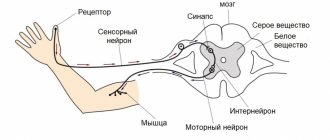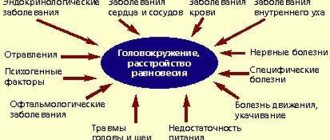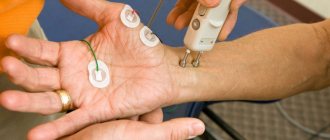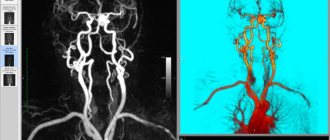The ear is an organ of hearing that performs very important functions in the human body. It provides the perception of sounds and their conduction, as well as orientation in space. Ripple or noise in the ear are symptoms of pathological changes in the auditory analyzer, the causes of which must be urgently determined in order to begin treatment in a timely manner. When there is a constant pulsation in the ear, a person becomes irritated and nervous, sleeps and eats poorly, and becomes depressed. These signs ultimately lead to even greater health problems: hearing impairment, mental disorders.
It can pulsate in both ears simultaneously or separately in each. The pulsation in the ear can be ringing, reminiscent of clicking, or dull, almost imperceptible. It is often accompanied by a feeling of congestion. In healthy people, the cause of painless pulsation in the ears, which occurs periodically, is stressful and conflict situations, physical and psycho-emotional stress, fluctuations in pressure and body temperature. In such cases, pulsating tinnitus is not a pathology and does not require special treatment. If it is heard constantly and is accompanied by pain, incoordination of movements, and the appearance of “spots before the eyes,” you should immediately visit a doctor. Such pulsation is a manifestation of a disease, the cause of which must be determined and eliminated.
Etiology
The causes of pulsation in the ear are very diverse. These include:
- Infectious and inflammatory diseases of the auditory analyzer,
- Closed and open head injuries,
- Vascular diseases - atherosclerosis, hypertension, various vascular malformations,
- Stress,
- Neoplasms of the head and neck,
- Wax plugs in the ears,
- Long-term treatment with antibiotics, especially ototoxic ones,
- Long-term use of non-steroidal anti-inflammatory drugs,
- Hormonal surge during pregnancy, menopause,
- Degenerative-dystrophic changes in the spine,
- Daily use of headphones
- Pressure surges during air travel, diving, mountain climbing,
- The natural process of aging of the body.
Pulsating in the ear - how to understand the condition
If there is a pulsation in the ear, then this indicates pathological changes in the auditory analyzer - it is urgent to establish the causes of this condition and eliminate them. If pulsation in the ear is constantly present, this leads to irritation, nervousness, and insomnia. As a result, the person’s condition worsens, and mental disorders may begin.
It can pulsate in one ear or in both at once; the “knocking” can be characterized as ringing, dull, reminiscent of a clicking sound. Often the pulsation is accompanied by congestion, decreased hearing acuity, and headaches.
If the ear begins to pulsate in a healthy person, then a disturbance in the psycho-emotional state may manifest itself - for example, stress, emotional “outbursts” (and not always negative!), spontaneous fluctuations in blood pressure. Such causes are not pathological and do not require special treatment.
But if the pulsation is accompanied by pain in the ears, the appearance of “spots” in front of the eyes, or impaired coordination of movement, then the person should immediately seek qualified medical help.
Diseases of the heart and blood vessels
Persons suffering from cardiac pathology quite often experience tinnitus, reminiscent of a heartbeat. The pulsation is especially acute when the patient climbs stairs or bends forward. He feels pressure in his head, lack of air, and noise in both ears.
- With hypertension , vascular tone is disrupted, capillaries become overfilled with blood, and systemic blood flow becomes difficult. The sound of blood “friction” through the vessels is perceived by a person as a pulsating noise. “It’s as if the heart is pulsating in the ears” - this is how patients characterize this phenomenon. If a hypertensive crisis develops, the flow of blood into the vessels of the inner ear becomes uneven. This stimulates the nerve endings, which also results in pulsation in the ears.
- Atherosclerotic processes lead to loss of elasticity of the vascular wall, which ceases to contract in the same rhythm as the heart. Such pathological pulsation becomes audible. If the ear is pressed against the pillow, it becomes especially noticeable. Patients with atherosclerosis complain of regular dizziness, noise and pulsation in the head, easy fatigue, poor memory, and hypertension.
- Violation of the structure and functioning of large arteries and veins , their narrowing or stratification changes the speed and direction of blood flow, which hits the walls of blood vessels. Patients claim that their ear throbs, but it does not hurt. Small aneurysms manifest themselves as pulsations in the head. The larger the size of the protrusion, the more pronounced these unpleasant sensations are.
How to treat tinnitus
If there is pulsation in the ears, what to do? Some patients try to solve the problem with folk remedies, others prefer to do nothing. The condition in question may be transient and disappear with certain therapeutic actions, but this is not a reason to refuse to consult a doctor. In many cases, pounding in the ears signals the development of a serious pathology, which can pose a danger not only to a person’s health, but also to his life. Therefore it is important:
- seek help from an otolaryngologist - he will find out whether the cause of this condition is ENT pathology, if necessary, prescribe an additional examination and refer to a specialized specialist;
- immediately undergo examination by a recommended specialist, who will make an accurate diagnosis and prescribe treatment.
Treatment for tinnitus involves eliminating the triggering factor. In some cases, therapy is prescribed to stabilize blood pressure, in others, surgery to remove a diagnosed tumor, and so on. If the cause of tinnitus is ENT pathology, then the following are used in treatment:
- ointments and ear drops with anti-inflammatory properties;
- physiotherapeutic procedures;
- rinsing the ear canal.
Any procedures for tinnitus should be prescribed by the attending physician.
On our website you can make an appointment with an ENT doctor to receive competent advice and referral for a full examination. Only a timely visit to a specialist will allow you to identify the cause of tinnitus and eliminate this condition.
Diseases of the ENT organs
Pulsation in the ear can occur with diseases of the ENT organs:
- Any part of the ear can become inflamed, as well as the Eustachian tube connecting it to the nasopharynx. Pathological changes in the auditory analyzer distort sound waves and reduce their perception. With otitis, the outflow of serous-purulent exudate is disrupted, an “echo effect” is created, internal noise increases, and blood pulsates. The patient has throbbing in the left ear due to left-sided inflammation of the auditory analyzer. If otosclerosis develops, in which the mobility of the auditory ossicles in the middle ear is impaired, then patients experience decreased hearing, dizziness and tinnitus.
- Labyrinthitis is an inflammation of the inner ear caused by the penetration of infection from chronic foci in the body. The main manifestations of labyrinthitis are vestibular disorders. In patients, coordination of movements is impaired, everything floats before the eyes, ataxia, nystagmus, and autonomic disorders occur: pallor, hyperhidrosis and dizziness. Irritation and death of sound receptors leads to pulsation in the ears, reversible hearing loss and even deafness.
- Hypersecretion of earwax often results in the formation of cerumen plugs, which must be removed promptly. Earwax blocks the ear canals, which causes hearing loss, inflammation and the appearance of pathological pulsation.
Causes of tinnitus and pulse
Ripple in the ears is not a disease, but a symptom that may indicate pathological diseases of the hearing organs or other internal organs. An unpleasant and irritating pounding sensation in the ears. Especially if it hits for a long period of time. In such a situation, it is necessary to examine a doctor who will determine the diagnosis and prescribe treatment. Below is a table indicating the possible causes when you hear a heartbeat in your ears.
- Causes of tinnitus and hearing loss
Specify your pressureMove the sliders 120 to 80
| Cause | Characteristic |
| Violation of blood pressure, problems with cardiovascular system | Decreased elasticity of blood vessels, lack or excess of blood flow to the capillaries of the inner ear. Accompanied by fainting (rarely). |
| Pathologies of the hearing organ | Accompanied by inflammatory processes in one ear or both. A loud noise is heard. If the functioning of at least one organ in the hearing system is disrupted, the sound is distorted and a feeling of pain appears. |
| Mechanical damage to the organ | The intensity of blood flow increases, strong pulsation and pain in the head appear. It appears in the right or left ear, depending on which one is damaged. |
| Presence of a neoplasm or tumor | The pressure of the growing compaction on the vessels or artery gives off a heartbeat in the ears. |
| During pregnancy | Swelling of the mucous membrane of the middle and inner ear. |
Also, the factors that provoke tinnitus are of a physiological nature: hypothermia, poor ear hygiene, chronic fatigue and lack of sleep. Abscess, poisoning, shock and pressure often cause pain in the auricle.
Return to contents
Pressure as one of the reasons
Impaired elasticity of the vascular muscles becomes one of the most common root causes of palpitations in the ear. This often happens with hypertension, when the levels reach 140/90 mmHg. High blood pressure therapy helps to get rid of such unpleasant symptoms. Hypotension (low blood pressure) is a pathology that produces a beating or noise in the ear area. Chronic disruptions in blood pressure indicators lead to disruption of the rhythm of vascular contraction, due to this, the capillaries of the inner ear are either overflowing with incoming blood (at high pressure), or they suffer from a lack of blood (at low pressure), which causes a feeling of pulsation.
Return to contents
Diseases of the heart and blood vessels
Diagnosed diseases of the heart and blood vessels can also give the patient a pulsation in the ear. It is especially pronounced when lifting weights, tilting the head, or going up/down stairs. In this case, the patient complains of darkening of the eyes, pain in the chest and a suffocation effect occurs. This occurs due to poor circulation. Also, the bending of the artery near the hearing organ causes blood to beat against the walls of the vessel. The presence of atherosclerosis is accompanied by noise in the hearing organ and pain. When the carotid artery or jugular artery is narrowed, blood tries to pass through the shunts with maximum force and an unpleasant symptom appears.
Return to contents
Pathologies of the hearing organs
To preserve your hearing, you need to consult a doctor in time.
Depending on the root cause of the development of the pathology, the patient may describe his condition with the following sensations:
- feeling of fluid flowing in the head;
- noise;
- audibility of sound at high frequencies;
- squeezing of the ear;
- pain;
- pulsation;
- hearing impairment.
If you have such symptoms, you should immediately consult a doctor.
It all depends on the nature of the disease and the clinical picture of the disease, as well as on the physiological characteristics of the patient’s body. Some diseases can cause increased production of earwax, which leads to the appearance of plugs. With otitis media (an inflammatory process in the organ of hearing) and untimely treatment, suppuration may begin due to the impossibility of fluid outflow.
Return to contents
- Why do we hear blood pulsing in our ears?
Other factors
The patient may complain of a pulse in the ears at night due to sleep disturbances and fatigue. Stress negatively affects our body and causes a lot of unpleasant symptoms. Noises in the ear can be a signal of the following diseases: oncology, diabetes, osteochondrosis, hepatitis. Mechanical damage to the ear can create a sensation of pulsation and sound in the organ. The noise can be caused by lying on one of the ears for a long time and squeezing its surface (more often this happens at night). Also, problems with the neck and its muscles can cause hearing problems.
Return to contents
Traumatic injuries
Brain injuries are a dangerous condition that threatens human health and life. With TBI, the blood supply to the auditory organ is disrupted, swelling and other signs of inflammation occur. This leads to dysfunction of auditory cells, disruption of sound transmission and sound perception. The throbbing and pressing headache intensifies when the victim begins to move his head.
If there is a fall or blow to the head, it is necessary to conduct a tomographic examination to rule out a concussion. This is extremely important for patients who experience increased pulsation and loudness of noise, drumming, dyspeptic symptoms, and dizziness. TBI has a severe course and serious consequences. After discharge, patients continue to complain of dizziness, pulsation in the head, and headache for a long time.
Osteochondrosis
Osteochondrosis is a degenerative-dystrophic disease of the spine, in which deformation of the vertebrae develops. Gradually, the distance between them decreases, the nerve roots and blood vessels of the neck are compressed by osteophytes. Blood stops circulating normally, nutrition, innervation of the brain and sensory organs are disrupted.
Immediately after an exacerbation, patients complain of congestion and constant tinnitus, reminiscent of a painless pulsation. It can be sharply expressed or, conversely, practically unnoticeable. In some cases it is tolerable, and in others it is acute, preventing a person from turning his head. Constant pounding in the ear makes patients feel stiff and immobile. Light pulsation causes minor discomfort in patients and does not cause any particular problems. Such symptoms are ignored by patients and remain unnoticed until a certain moment when it is impossible to turn the head. The pulsation may subside in an advantageous position of the head and appear again during active movements.
In addition to tinnitus, patients experience pain in the back of the head and temples, insomnia, ringing, whistling, clicking and crackling in the ears, visual acuity decreases, memory deteriorates, hands become numb, and blood pressure increases.
Overwork
In healthy people, pulsating tinnitus is a sign of fatigue, exhaustion of the nervous system and chronic stress. At the end of a busy day of work, spent in a noisy and uncomfortable environment, your ears begin to throb. Intrusive noise at night prevents a person from falling asleep, relaxing and resting. Even basic sounds: the ticking of a clock, raindrops, breathing begin to irritate and seem loud. In this state, the movement of blood through the vessels is perceived as a pulsating noise. Tired people listen to everything, become depressed and begin to invent non-existent illnesses. If drug therapy does not help to cope with the problem, the help of a psychotherapist is necessary.
Other reasons
- Throbbing pain in the ears appears in patients suffering from cancer. Brain tumors and acoustic neuromas grow rapidly and compress the main neurovascular bundles of the neck. This leads to painless pulsation in the ears, unilateral hearing loss, and impaired facial expressions and speech.
- Hormonal changes occurring in the body of a pregnant woman lead to disruption of the water-electrolyte balance and swelling of the mucous membrane of the hearing organ.
- With age, atherosclerotic and degenerative processes develop in the body, the functions of auditory cells are disrupted, acoustic signals are distorted, and a constant background noise appears.
- Multiple sclerosis is a chronic disease characterized by destruction of the myelin sheath of nerve fibers and slow transmission of nerve impulses. Patients develop paralysis and paresis, breathing problems, and tinnitus.
- Depression and neuroses are manifested by psychogenic noise and pulsation in the ears. Stress, nervous tension, lack of sleep deplete the central nervous system, neurasthenia develops, which is manifested by increased fatigue, insomnia, irritability, depressive mood, pulsation and noise in the head, and headache.
- Long-term use of Gentamicin, Streptomycin, Haloperidol, Furosemide or Aspirin can cause damage to the structures of the inner ear and hearing impairment.
- Occupational hazards resulting in the development of hearing loss - increased noise levels at work, at the airfield.
- Persons with chronic sinusitis often complain that their ear is blocked and throbbing, pressing sensations appear in the head, sound perception worsens, autophony and monotonous noise appear. If the stuffy ear throbs and hurts a lot, you need to visit an ENT doctor. Since such symptoms are characteristic of otitis media, which has become a complication of inflammation of the maxillary sinus. And this is not surprising, because there is a close connection between the organs, facilitating the migration of infection.
- Poisoning with poor quality food, narcotic and sleeping pills is manifested by vomiting and diarrhea, fever, noise and pulsation in the ears, chills, lightheadedness, weakness, and convulsions.
- Alcohol abuse.
If the cause of pulsating tinnitus cannot be determined, it is called idiopathic.
Possible complications
Pulsation in the ears and the inability to suppress it cause severe discomfort to a person. Prolonged stay in this state can cause mental disorders and lead to changes in feelings, perceptions, thinking and behavior. Complications that arise from auditory hallucinations may be the following:
- increased irritability;
- insomnia;
- memory impairment;
- impaired concentration;
- chronic fatigue;
- rarefied breathing;
- depressive state.
If the cause of noise effects in one ear is pathological processes, then the consequences of such a condition can be much more serious, even fatal. The presence of a tumor or neuroma of the auditory nerve can lead to complete or partial hearing loss. Infection of the middle ear threatens to spread the infection to other organs and systems, which is fraught with pulmonary edema and hypoxia. In the absence of timely medical assistance, complications that arise may be irreversible, so it is important to go to the hospital in time.
- How to treat pancreatitis of the pancreas at home
- Agar-agar - what is it, composition and benefits, home recipes
- Pickled cucumbers without sterilization
Treatment
Pulsation in the ear is not the main disease, but just a symptom. To get rid of pulsating tinnitus, you need to find out its cause. Treatment of pathologies manifested by pathological pulsation is carried out by otolaryngologists, neurologists, angiosurgeons, and oncologists.
Experts recommend that patients follow these rules:
- Keep your ears clean, remove wax plugs,
- Avoid drinking alcohol and smoking tobacco,
- Massage the neck and head to quickly relieve pulsation in the ear,
- Listen to music without headphones and at low volume,
- Take sedatives and psychotropic drugs if necessary,
- Take long walks in the fresh air
- Eat more fruits and vegetables
- Exercise,
- Carry out neck exercises
- Wear hats in the cold season,
- Normalize blood pressure levels,
- Avoid colds, get treatment on time,
- Always have a good mood.
These general recommendations, together with drug therapy, will alleviate the condition of patients and help prevent the recurrence of pulsation in the ears.
General restorative therapy
- Drugs that improve microcirculation of cerebral vessels - Vinpocetine, Cerebrolysin, Piracetam,
- Medicines that normalize heart function - “Korglikon”, “Strofanthin”, “Digoxin”,
- Sedatives – “Novopassit”, “Persen”, “Tenoten”,
- Physiotherapeutic procedures - magnetic therapy, ultrasound, solux, UHF heating, microcurrent therapy, intra-ear laser treatment.
Treatment of otitis media
- Ear drops containing NSAIDs – “Otipax”, “Otinum”; containing glucocorticoids - Anauran, Polidexa; containing antibiotic – “Normax”, “Otofa”; containing an antifungal agent - “Candibiotic”.
- Antibacterial therapy is carried out after receiving the results of a microbiological study of ear discharge and determining the sensitivity of the isolated pathogen to antibiotics. Patients are usually prescribed Amoxicillin, Amoxiclav, Ciprofloxacin, and Cefolexin.
- Antibacterial therapy should be accompanied by the intake of probiotics - “Linex”, “Acipol”, “Bifidumbacterin”.
- Painkillers and antipyretics to reduce symptoms - Paracetamol, Ibuprofen.
- Antihistamines for relieving edema - Suprastin, Claritin, Zirtec.
- Vasoconstrictor nasal drops to facilitate nasal breathing - “Vibrocil”, “Tizin”, “Nazivin”.
- Immunomodulators – “Immunorix”, “Licopid”, “Polyoxidonium”.
This is a comprehensive treatment for otitis of various localizations, allowing you to completely get rid of this pathology, and along with it, pulsation in the ear.
Removing wax plugs
You can remove wax plugs yourself at home. First, the cork needs to be soaked. This is done by instilling a 3% hydrogen peroxide solution into the ear. After some time, they move on to removing it. A warm decoction of medicinal herbs is taken into a large syringe without a needle, which is poured into the ear canal. At the same time, the head is tilted to the side of the sore ear so that the water pours back out. For three days after washing out the plugs, anti-inflammatory drops should be dripped into the ear to prevent the development of inflammation. If the plug is loose, it can be removed using A-Cerumen ear drops. They are instilled into the ear and waited for 3-5 minutes, then placed on the affected side. Dissolved sulfur flows out on its own.
Treatment of osteochondrosis
To treat osteochondrosis, patients are prescribed NSAIDs that reduce pain and other signs of inflammation - Voltaren, Nise, Ortofen. This is the basis of therapy, which is supplemented with effective pain relief, muscle relaxation, and vitamin therapy. Patients with osteochondrosis are recommended to exercise therapy, spinal traction, massage, acupuncture, and manual therapy.
Pulsating tinnitus: causes and treatment
If the causes of pulsating tinnitus lie in disorders of the psycho-emotional state, then treatment will be aimed at strengthening general health and relieving stress, and here’s what you can do on your own:
- Normalize your daily routine . We are talking about daytime wakefulness and night rest, the latter should last at least 7-8 hours.
- Adjust your diet . You need to adhere to a diet that includes restrictions on the consumption of fatty, high-calorie foods, smoked foods, spicy and salty foods.
- Incorporate physical activity into your daily life . They should be as moderate as possible; the best choice would be a short/condensed fitness program, a yoga routine, active walking or light running on a treadmill. 20-30 minutes of exercise a day is enough to “unload” the nervous system.
- Learn to abstract yourself from problems at home . Problems may arise with this, so you should seek professional help from psychotherapists.
- Stop drinking alcoholic beverages and smoking . As a last resort, you need to radically reduce the number of cigarettes smoked per day, but you will need to completely abandon alcohol-containing liquids.
If stress, irritation, and nervous breakdowns are too frequent, then you can use specific medications - Persen, valerian extract, Afobazol, Glycine and other sedatives will help. But you should consult your doctor about taking any capsules/tablets.
Persen Valerian Extract Afobazole Glycine
Folk remedies
To get rid of non-pathological pulsation in the ears, you can use folk remedies:
- Viburnum juice . You need to grind 10-15 berries with 1 teaspoon of honey and use the finished mixture as a compress - it is laid out on a gauze napkin or a bandage folded in several layers. You should get a “tampon” that is inserted into the problem ear and kept there for at least 4 hours. The duration of use of this remedy is about 15 days.
- Currant leaves . A collection is prepared with them - elderberry and lilac flowers are added to the main ingredient in equal parts. Then 2 tablespoons of the herbal mixture are poured into 500 ml of water and simmered at low boil for 20 minutes. The finished product is cooled, filtered and consumed 3 times a day, 70 ml per serving. The duration of therapy is unlimited, until the pulse in the ears completely disappears.
- Onion juice . To prepare it, you need to stuff a peeled onion with cumin seeds and bake it in the oven. Then the vegetable must cool and only after that the juice is “extracted” from it, which is used as drops. Instill 2-3 drops into the problematic ear 3 times a day. There are no restrictions on the duration of treatment; this remedy can be used for a long time until the unpleasant sensation completely disappears.
How to get rid of ENT problems with drugs
Getting rid of ENT problems that are accompanied by pulsation in the ears is possible only under the supervision of doctors - inflammatory processes involve taking medications, undergoing physiotherapeutic procedures and following the recommendations of specialists. What to do for effective treatment of ENT diseases:
- Take a full course of antibiotics. If such drugs were prescribed by a doctor, it means that the development of the inflammatory process was provoked by bacteria, and they are destroyed only by specific therapy. Usually, such medications quickly relieve symptoms, including pulsation in the ears, but you should never stop taking antibiotics - the infection will return, and you will have to start therapy all over again.
- Instill vasoconstrictor drugs into the nose. This will reduce swelling of the mucous membrane not only in the nasal passages, but also in the ear canal. The result will be the disappearance of congestion and a significant reduction in the severity of pulsation in the ears. True, such drugs cannot be used for more than 5 days in a row.
- Take ear drops only after a doctor's prescription. Otipax and Polydex are considered the most effective - they “work” both as an analgesic, and as a decongestant, and as an anti-inflammatory agent.
Otipax Polydexa
- Take antihistamines. They quickly relieve swelling in the ear canal, as a result, reduce the severity of symptoms of ENT diseases. Most often, doctors prescribe Suprastin, Zyrtec, Claritin - they do not belong to the group of hormonal drugs and do not cause drowsiness.
Regarding compresses, doctors do not give a definite answer, but they emphasize that it is impossible to warm up the ear without making a diagnosis - often ENT diseases are accompanied by the formation of purulent exudate, and any thermal procedures in this case are strictly prohibited.
Before visiting a doctor, you can only apply a cold compress for 15-20 minutes (a heating pad with ice water, ice, a wet towel) to reduce the severity of pulsation in the ear.
Removing wax plugs
The most effective method is to remove wax plugs by rinsing, but this should only be done by a doctor and in compliance with certain rules:
- Do not start the procedure without examination. In case of hearing loss, rupture of the eardrum, or chronic otitis media, rinsing is strictly prohibited - the fluid freely penetrates into the middle ear and provokes the onset of the inflammatory process.
- Make sure that the wax plug does not completely block the ear canal. If the blockage is already complete, then rinsing not only will not help, but will also worsen the condition - a stream of water will push the blockage and can lead to perforation of the eardrum.
- The water should be no higher or lower than 37 degrees. Only in this case is it considered comfortable and does not provoke vasoconstriction and the appearance of unpleasant sensations.
- If the sulfur plug is too hard, then soften it first. To do this, you need to instill special warm drops into the problem ear for 3 days. After this procedure, hearing may deteriorate, but this is normal - the plug begins to swell and block the ear canal.
You can get rid of sulfur plugs yourself with special preparations that soften the clot:
| Name | Mode of application | Photo |
| Cerumen-A | You need to make one “injection” of the product into the ear and after a minute tilt your head so that the drops with clot particles flow out | |
| Sodoglycerin drops | Place 10-15 drops in the ear, leave for 15 minutes (you can stuff the ear canal with cotton wool) and then rinse the ear with a stream of warm water | |
| Remo-vax | 20 drops are injected into the ear, left for 20 minutes, if the cerumen plug is very dense, then the procedure can be carried out daily for 5 days |
All of the listed drugs are prohibited for use in inflammatory diseases, so if you have doubts about the presence of cerumen, you should first consult an otolaryngologist.
Restoration of the cardiovascular system
If the cause of pulsation in the ears is a dysfunction of the cardiovascular system, then treatment should be carried out only under the supervision of a cardiologist.
Usually prescribed:
- drug therapy for hypertension;
- surgery for aneurysm;
- medications or surgery for atherosclerosis.
Surgical intervention for an aneurysm
If the pathology is not critical, then you can restore the functioning of the heart and blood vessels on your own - this will be advisable for incipient hypertension.
Doctors recommend:
- reduce weight;
- give the body moderate physical activity;
- quit smoking and alcohol;
- adjust your diet;
- normalize the psycho-emotional background.
Help with osteochondrosis
When osteochondrosis is diagnosed, complex treatment is prescribed - acupuncture, medications, physiotherapy. Doctors choose from medications:
- non-steroidal anti-inflammatory drugs – Ibuprofen, Diclofenac;
- vitamins – B6, B12, B1;
- novocaine blockade;
- steroid drugs;
- muscle relaxants – Sirdalud, Mydocalm.
Mydocalm Diclofenac Ibuprofen Sirdalud
Among other treatment areas, the following are particularly effective:
- physical therapy – exercises relax the vertebrae, relieve pressure on blood vessels and nerve endings;
- electrophoresis and ultrasound - relieve inflammation and swelling of soft tissues;
- massage – relaxes muscles, relieves stiffness.
Together, all measures ensure relief from vasoconstriction and normal/full blood flow. The result will be the disappearance of pulsation in the ears.
Watch the video about a set of exercises for cervical osteochondrosis:
For neoplasms
Neoplasms of a benign or malignant nature should be treated only by doctors, and you can help yourself with severe pulsation in the ears against the background of such pathologies by the following measures:
- applying a cold compress for 15 minutes 2-3 times a day;
- instillation of vasoconstrictor drops into the nose;
- blood pressure control;
- taking sedatives.
Of course, any therapy should be carried out only after consultation with your doctor.










